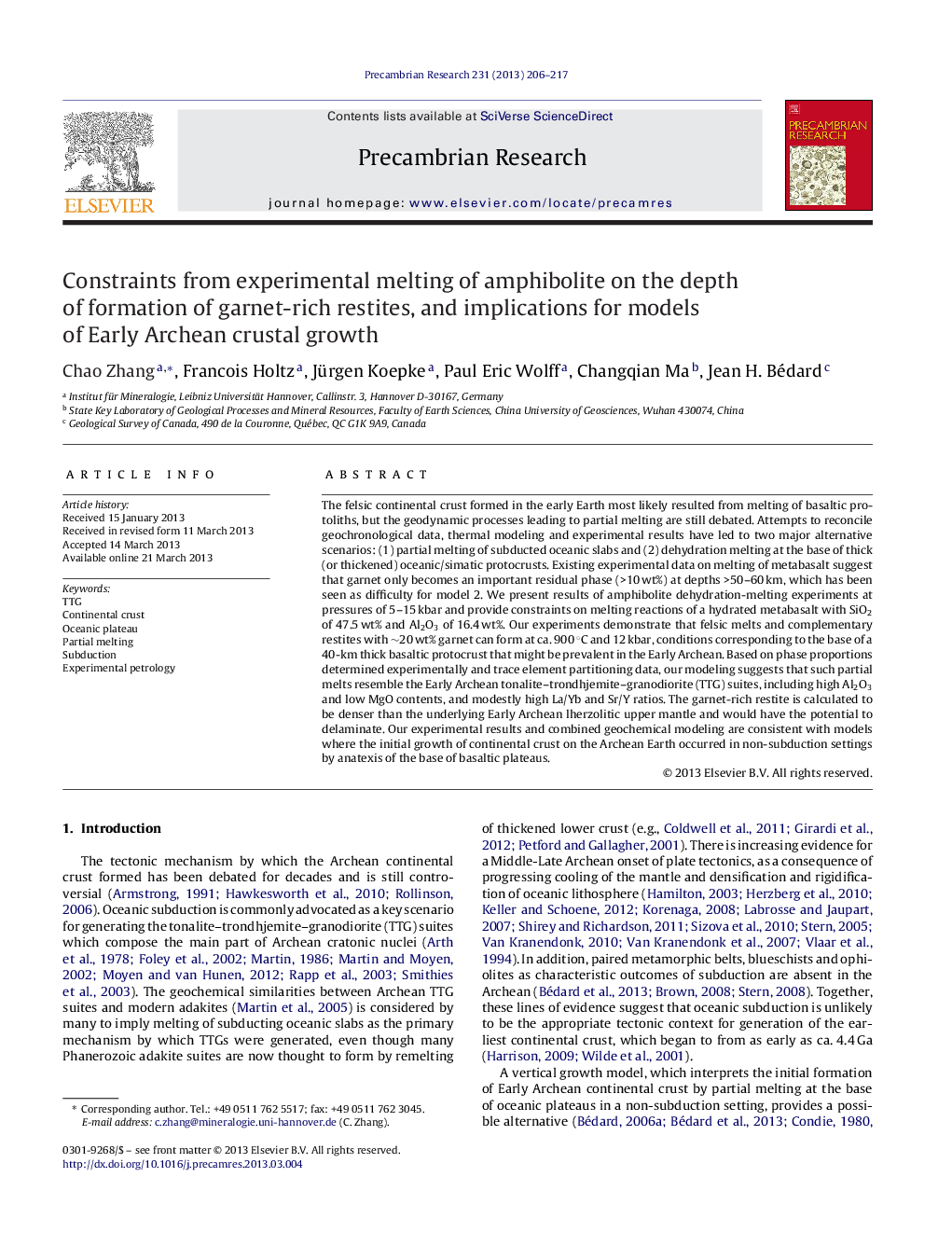| Article ID | Journal | Published Year | Pages | File Type |
|---|---|---|---|---|
| 4723217 | Precambrian Research | 2013 | 12 Pages |
•Amphibolite dehydration-melting experiments were conducted at 5–15 kbar.•At 12 kbar and 900 °C, ∼20 wt% garnet can be formed in the solid residue.•The felsic melt is geochemically consistent with Early Archean high-Al TTGs.•The initial felsic continental crust formed in a non-subduction setting.
The felsic continental crust formed in the early Earth most likely resulted from melting of basaltic protoliths, but the geodynamic processes leading to partial melting are still debated. Attempts to reconcile geochronological data, thermal modeling and experimental results have led to two major alternative scenarios: (1) partial melting of subducted oceanic slabs and (2) dehydration melting at the base of thick (or thickened) oceanic/simatic protocrusts. Existing experimental data on melting of metabasalt suggest that garnet only becomes an important residual phase (>10 wt%) at depths >50–60 km, which has been seen as difficulty for model 2. We present results of amphibolite dehydration-melting experiments at pressures of 5–15 kbar and provide constraints on melting reactions of a hydrated metabasalt with SiO2 of 47.5 wt% and Al2O3 of 16.4 wt%. Our experiments demonstrate that felsic melts and complementary restites with ∼20 wt% garnet can form at ca. 900 °C and 12 kbar, conditions corresponding to the base of a 40-km thick basaltic protocrust that might be prevalent in the Early Archean. Based on phase proportions determined experimentally and trace element partitioning data, our modeling suggests that such partial melts resemble the Early Archean tonalite–trondhjemite–granodiorite (TTG) suites, including high Al2O3 and low MgO contents, and modestly high La/Yb and Sr/Y ratios. The garnet-rich restite is calculated to be denser than the underlying Early Archean lherzolitic upper mantle and would have the potential to delaminate. Our experimental results and combined geochemical modeling are consistent with models where the initial growth of continental crust on the Archean Earth occurred in non-subduction settings by anatexis of the base of basaltic plateaus.
